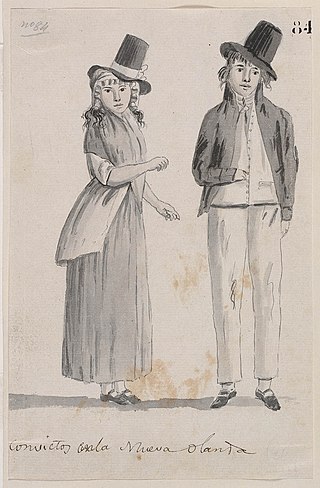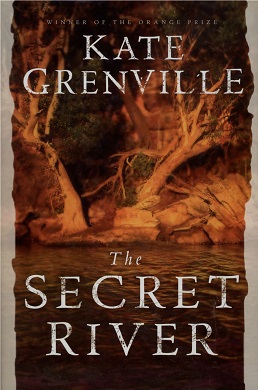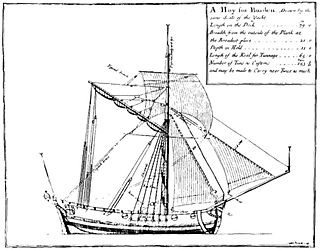
Solomon Wiseman (16 April 1777 - 28 November 1838) was a convict, merchant and ferryman. The town called Wiseman's Ferry, New South Wales, Australia is named after him.

Solomon Wiseman (16 April 1777 - 28 November 1838) was a convict, merchant and ferryman. The town called Wiseman's Ferry, New South Wales, Australia is named after him.
Wiseman was born in Southwark, England in 1777, the son of a Richard Wiseman, a cloth worker and victualler, and became a lighterman on the Thames. He was employed by the British government to carry spies to France. On 30 October 1805 he was found guilty of stealing wood from a lighter and was sentenced to death. This was commuted to Transportation for Life and he was sent to New South Wales where he arrived in August 1806 on the Alexander. He traveled with his wife Jane and two sons, in a cabin rather than with the other convicts. On arrival he was almost immediately given conditional liberty and assigned to his wife. In 1810 he was given his ticket of leave and in 1812, a pardon. [1]
In 1811 Wiseman had constructed a sloop called the Hawkesbury Packet which was a coastal trader. Not long after he acquired the sloop Hope. He shipped coal from Newcastle (New South Wales), wheat from the Hawkesbury and timber from Shoalhaven. Both ships were wrecked within months of each other in 1817. [2] After the wrecks of his ships he purchased the Mary Ann (ship) which he chartered to the Government. In 1817 he was granted a lease of 200 acres (0.81 km2) on the Hawkesbury River at Lower Portland Head, which later became known as Wiseman's Ferry. In 1821 he established an inn called 'the Sign of the Packet' on the banks of the river. When he heard that the government intended to build a road between Sydney and the Hunter valley, he persuaded the authorities to route it through his land. Road building commenced in 1826 with two gangs operating either side of the river, and in 1827 he received a contract to supply all provisions to the gangs and later that year a license to operate a ferry to transport people and stock across the river. The ferry crossing site was moved in 1829, to its current site, when a route was chosen for the Great North Rd. The current site is the oldest ferry crossing in Australia. In 1826 he built on his land an elaborate house for his second wife, Sophia, called Cobhams Hall. This is now a pub called Wiseman's Inn Hotel.
He died in 1838. [1]
The Secret River, a novel written by Wiseman's great-great-great-granddaughter, Kate Grenville, was inspired by her desire to understand "what had happened when Wiseman arrived there [the area now known as Wiseman's Ferry] and started the business of 'settling'". [3] Her inspiration to understand this came from her taking part in the 28-05-2000 Reconciliation Walk across Sydney Harbour Bridge during which she realised that she didn't know much about "what had gone on between the Aboriginal people and the settlers in those early days". [4] Initially intended to be a work of non-fiction about Wiseman, the book eventually became a fictional work based on her research into Wiseman but not specifically about Wiseman himself.

The Hawkesbury River, or Hawkesbury-Nepean River, is a river located northwest of Sydney, New South Wales, Australia. The Hawkesbury River and its associated main tributary, the Nepean River, almost encircle the metropolitan region of Sydney. Between Wisemans Ferry and the Pacific Ocean marks the boundary of Greater Metropolitan Sydney in the south and the Central Coast region to the north.

St Albans is a small and historic village on the Macdonald River, New South Wales, Australia, about 94 kilometres (65 mi) north west of Sydney. At the 2011 census, St Albans and the surrounding area had a population of 305 people.

The Great North Road is a historic road that was built to link early Sydney, in the Colony of New South Wales, now Australia, with the fertile Hunter Valley to the north. Built by convicts between 1825 and 1836, it traverses over 260 kilometres (162 mi) of the rugged terrain that hindered early agricultural expansion.

Mary Reibey née Haydock was an English-born merchant, shipowner and trader who was transported to Australia as a convict. After gaining her freedom, she was viewed by her contemporaries as a community role model and became legendary as a successful businesswoman in the colony.

Wisemans Ferry is a town on the northern outskirts of Sydney and the south-west of the Central Coast region in the state of New South Wales, Australia, located 75 kilometres north north-west of Sydney. It is located in the Sydney local government areas of the Hornsby Shire, The Hills Shire, City of Hawkesbury and the Central Coast local government area of Central Coast Council. The town is a tourist spot with picnic and barbecue facilities. As well as a rich convict and colonial heritage in the area, the Dharug National Park and Yengo National Park are close by.

Wisemans Ferry is a cable ferry across the Hawkesbury River in New South Wales, Australia. The ferry operates from the eponymous community of Wisemans Ferry on the south bank, to a point on the north bank downstream of the Hawkesbury River's confluence with the Macdonald River, connecting with the old Great North Road. The crossing has remained in use on its current site since 1829, making it the oldest ferry crossing still in operation in New South Wales, and possibly in Australia.
The Macdonald River is a perennial river located in the Hunter and Outer Metropolitan Sydney regions of New South Wales, Australia. It is a part of the Hawkesbury-Nepean catchment.

Between 1788 and 1868, about 162,000 convicts were transported from Great Britain and Ireland to various penal colonies in Australia.
Glenworth Valley is in the Central Coast region to the north of the Hawkesbury River itself 50 km (31 mi) to the north of the city of Sydney, Australia. Popran Creek flows through the valley which includes parts of the suburbs of Glenworth Valley and Mount White. Popran National Park was created in 1994 and is for the most part made up of sandstone cliffs and gullies. The creation of the park is indicative of the value the area has because of its unique indigenous and early European history, fauna, flora and geology. The Park takes its name from Popran Creek which rises in the locality of Central Mangrove and then flows for approximately 24 km (15 mi) in a mostly southern direction till it reaches Mangrove Creek.

The Secret River is a 2005 historical novel by Kate Grenville about an early 19th-century Englishman transported to Australia for theft. The story explores what might have happened when Europeans colonised land already inhabited by Aboriginal people. The book has been compared to Thomas Keneally's The Chant of Jimmie Blacksmith and to Peter Carey's True History of the Kelly Gang for its style and historical theme.
Hawkesbury Packet was a sloop constructed for Solomon Wiseman that helped him 'rise' from being just a convict to a wealthy colonial landholder in Australia.
Hope was a small ship launched in 1802. She wrecked at Port Stephens, New South Wales, Australia in 1817.
John Howe (1774–1852) was a free settler and explorer of Australia in the early period of British colonisation. He became a successful building contractor, and also served as a chief constable and coroner. It is believed that he was born at Redbourn, Hertfordshire, England, the son of John How and his spouse Mary Roberts.

Wollombi is a small village in the Hunter Region of New South Wales, Australia. It is within the Cessnock City Council LGA, situated 29 kilometres (18 mi) southwest of Cessnock and 128 km (80 mi) north of Sydney. To the south is the village of Laguna, to the east, the village of Millfield and to the north, the village of Broke.

Rose Hill Packet, was a marine craft built in Australia to serve the second place of European settlement in Australia, "Rose Hill", the furthest navigable point inland on the Parramatta River. When launched the vessel was named Prince William but was later named the Rosehill Packet by the convicts. The boat design was later called a packet boat, because its use was that of running the first Parramatta River trade ferry, passenger, cargo, and mail service between the Sydney Cove and the Rose Hill (Parramatta) First Fleet settlements after she was launched in Sydney Cove in September and commissioned on 5 October 1789. She was the first purpose-built sailing vessel constructed in Australia. She later earned the nickname 'The Lump'. Some authorities believe that a 1790 drawing by First Fleet MIdshipman George Raper shows the vessel in the centre of Sydney Cove.
Peter Kenney Hibbs was an English mariner and a member of the First Fleet to Australia in 1788.
A prince regent, or prince-regent, is a prince who rules a monarchy as regent, while a monarch is indisposed.
Several vessels have been named Prince Regent for George IV, of England, who was Prince regent from 1811 to his accession to the throne in 1826: